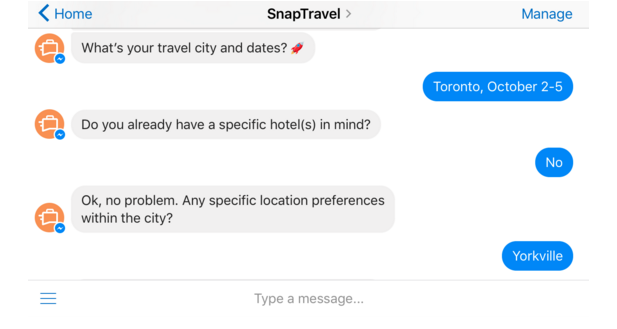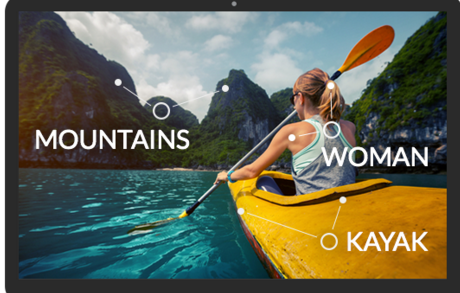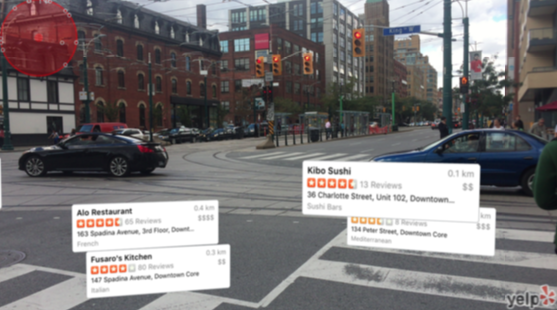Don’t miss “State of AI: How AI (Artificial Intelligence) Has the Potential to Transform Destination Marketing,” presented by Dan Holowack, CEO at CrowdRiff at #eTS16 this month. Get plugged in to the subject in this guest post from Dan.
5 Examples of AR, VR, & AI That Are Transforming Travel
You’ve probably heard of Pokemon Go. It exploded in popularity all around the world, starting July this year.
It’s the game where people can encounter and capture Pokemon while walking around in real life, through their smartphones.
Have you wondered at its success? What made it so phenomenally popular?
It had the ability to merge the beloved Pokemon world with our own — using augmented reality.
New technologies like augmented reality (AR), virtual reality (VR), and artificial intelligence (AI) are transforming the digital space. Digital technology is no longer constrained to the world of computers. AR, VR, and AI merge digital worlds with reality, and are changing the ways we’re able to interact with both.
This creates so many possibilities for the tourism industry. We can completely enhance and even transform the traveler experience with this technology.
Innovative companies are already taking strides — here are 5 examples of AR, VR, and AI that are transforming travel.
- Snaptravel
“Am I talking to a human or a bot?” is one of the FAQs for the new hotel booking chatbot, SnapTravel, powered by artificial intelligence. The answer: both.
When planning your trip, you just message your trip details to SnapTravel over Facebook, Slack, or text, and it’ll pull hotel recommendations for you. It’ll ask you what your budget is and text you pictures, in a very human way. Most of the time, it’s a bot answering your questions, but in the odd instance that a question stumps the bot, a human will take over.
The whole process of booking a hotel with SnapTravel feels just like having a text conversation with a (very quick responding and knowledgeable) friend.
- Virtual Gorilla (VR)
The Virtual Gorilla is the world’s first virtual reality travel brochure, from Matoke Tours, an African travel agency. After downloading the app and placing your smartphone in a VR viewer (either Google Cardboard or Samsung Gear VR Device), you’re transported straight to Uganda. You can embark on a virtual safari, stand among gorillas, and tour the lodges available for your stay — all from the comfort of your own home.
This immersive travel brochure gives users a real taste of exploring Uganda before you go, by bringing it first to you.
- CrowdRiff + Google Vision
CrowdRiff is a visual marketing platform that many DMOs, attractions and museums are using to find the user-generated photos people have taken in their destination, and use as marketing assets.
CrowdRiff has recently integrated with Google Vision, which uses artificial intelligence to analyze photos and tag them according to what the photo shows (e.g. “sailing”, “family”, “Eiffel Tower”). And that means that searches for photos in CrowdRiff go deeper than just the original captions and hashtags.
With artificial intelligence sorting their images, DMOs can quickly and easily find the specific visuals they want.
- Connie the Robot Concierge
Can you imagine getting directions or restaurant recommendations from a robot? That’s the artificial intelligence project Hilton and IBM are working on.
Standing at about 2ft tall, Connie is a robot concierge currently being tested at the Hilton McLean hotel in Virginia. While she can’t check you in yet, she can offer hotel information, directions, and recommendations about the city.
A robot concierge presents an opportunity to delight guests in ways they don’t expect. Because honestly, who wouldn’t love asking a robot all about her favorite places to eat?
- Yelp Monocle
The Yelp Monocle has been showing people great places to go through augmented reality since since 2009, as a special hidden feature.
The regular Yelp format shows users reviews of local businesses either through a list or map view. But the Monocle view can show you the businesses through your actual view of the real world, when pointing your phone in different directions.
Monocle’s augmented reality means you can interact with digital reviews at the same time you explore the real world.
Looking to the future
Artificial intelligence, virtual reality, and augmented reality are technologies that are breaking down barriers in travel and tourism. From the discovering and researching stages, to actually booking and visiting, the travel experience is transforming. These are technologies you definitely want to monitor.




Leave a Reply